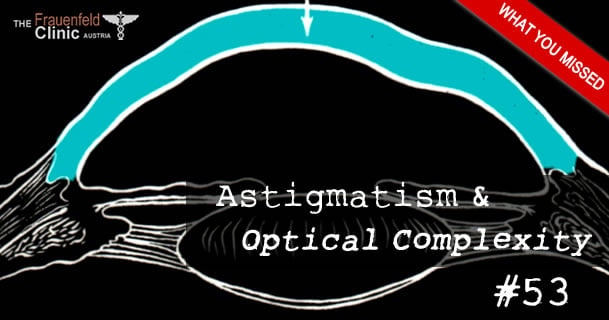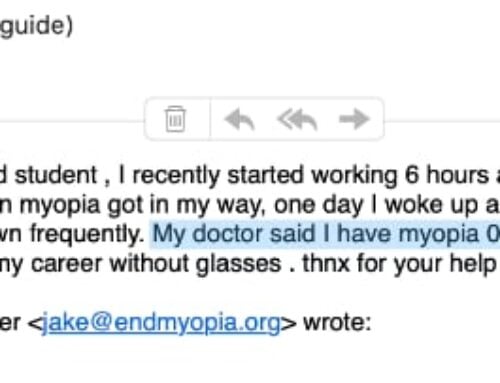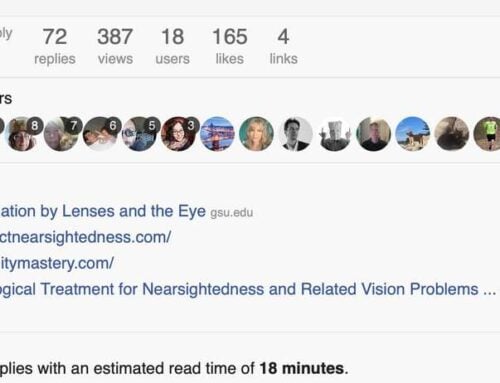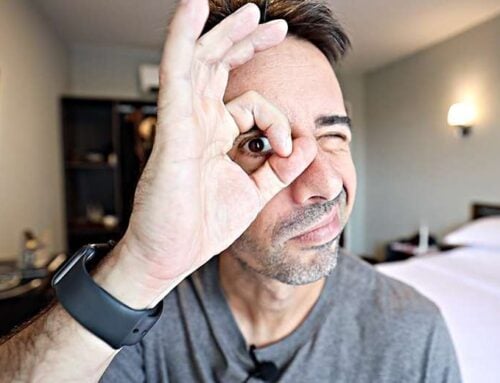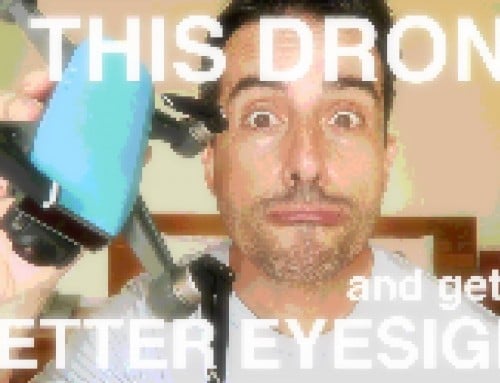We touch on the subject of what astigmatism is adding in prescription complexity, in the Adult Web Myopia Rehab Program (Installment #53, Week 15).
This is well past the core program of the web myopia rehab program. We are now well into discussing all the tweaks in really getting the most out of improving your eyesight. The core work was to eliminate the harmful single-prescription world view created for you by the optic shops. Understanding how to manage eye strain, take your own measurements, move into conscious, active focus – vs. just passively consuming visual input, with high prescription glasses.
Astigmatism correction can be a problem, if added to your lenses without some critical reflection.
People often ask me, ‘What is astigmatism, anyway”? There are lots of detailed explanations on various sites, of both the biology and optics that cause astigmatism. In simplest terms, we can look at it this way:
Causes of this are of course speculative.
While there could be many, I have observed a rise in astigmatism, correlating strongly with myopia degree, for myopes with prescriptions of -2D or higher – where axial myopia (elongation of the eyeball) becomes part of the myopia symptom.
I believe that in many cases, astigmatism comes from the irregular shape that the eye is ‘pulled’ into, as it elongates in axial myopia.
The theory is further supported by the fact that I have been able to reduce, and then eliminate astigmatism, as we reduce myopia.
It is almost certain that by the time you are below -1D as part of my myopia rehab program, you have completely eliminated your astigmatism. It is also quite likely that you have no astigmatism correction by the time you are around -2D in normalized prescription, as part of the Web program.
My main conern with astigmatism correction is the optical complexity it adds to your glasses.
Glasses are just like any other prescription substance. We want to be quite careful with ‘dosage’, as prescriptions affect your body. A high astigmatism correction may further change your eye, as it changes where light focuses on your retina. Over prescribe astigmatism correction, and you will most likely see it continue to increase – in a case where this could have been avoided easily.
To address the question of ‘what is astigmatism’, we want to go the logical step further, and ask ‘why astigmatism’, and ultimately ‘how do we eliminate astigmatism’. If you are in the Web program, Week 14 – 16 will help address the latter part of these questions.
If you are not in the Web program, just consider the matter of complexity of your glasses:
If you say ‘yes’ to three (or all) of the above, consider just how complex your prescription is. Light is being redirected on all sorts of different planes, and on top of it, differently for your left and right eye. Is all that really necessary? How much does this negatively affect your ability to see, without this complex eyesight prosthetic?
Could you eliminate some of this complexity, with some careful planning, and critical measurement?
The answer to that, from my (obviously biased) perspective, is an unequivocal yes. If you are supporting the Web Program, I am gladly sharing the ins and outs of this in quite some detail.
Enjoy!

